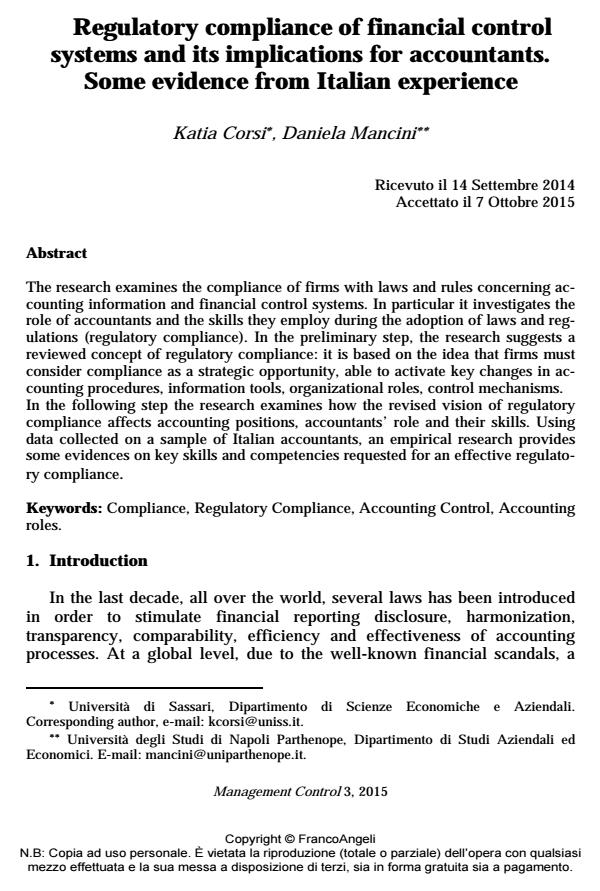Regulatory compliance of financial control systems and its implications for accountants. Some evidence from Italian experience
Titolo Rivista MANAGEMENT CONTROL
Autori/Curatori katia Corsi, Daniela Mancini
Anno di pubblicazione 2015 Fascicolo 2015/3
Lingua Inglese Numero pagine 27 P. 65-91 Dimensione file 160 KB
DOI 10.3280/MACO2015-003005
Il DOI è il codice a barre della proprietà intellettuale: per saperne di più
clicca qui
Qui sotto puoi vedere in anteprima la prima pagina di questo articolo.
Se questo articolo ti interessa, lo puoi acquistare (e scaricare in formato pdf) seguendo le facili indicazioni per acquistare il download credit. Acquista Download Credits per scaricare questo Articolo in formato PDF

FrancoAngeli è membro della Publishers International Linking Association, Inc (PILA)associazione indipendente e non profit per facilitare (attraverso i servizi tecnologici implementati da CrossRef.org) l’accesso degli studiosi ai contenuti digitali nelle pubblicazioni professionali e scientifiche
The research examines the compliance of firms with laws and rules concerning accounting information and financial control systems. In particular it investigates the role of accountants and the skills they employ during the adoption of laws and regulations (regulatory compliance). In the preliminary step, the research suggests a reviewed concept of regulatory compliance: it is based on the idea that firms must consider compliance as a strategic opportunity, able to activate key changes in accounting procedures, information tools, organizational roles, control mechanisms. In the following step the research examines how the revised vision of regulatory compliance affects accounting positions, accountants’ role and their skills. Using data collected on a sample of Italian accountants, an empirical research provides some evidences on key skills and competencies requested for an effective regulatory compliance.
Parole chiave:Compliance, Regulatory Compliance, Accounting Control, Accounting roles.
- Accounting Information Systems in an Open Society. Emerging Trends and Issues Daniela Mancini, in MANAGEMENT CONTROL 1/2016 pp.5
DOI: 10.3280/MACO2016-001001 - Detection of fraud in financial reporting of small and medium entities in the field of manufacturing industry Denis Kušter, in Ekonomija: teorija i praksa /2021 pp.17
DOI: 10.5937/etp2102017K
katia Corsi, Daniela Mancini, Regulatory compliance of financial control systems and its implications for accountants. Some evidence from Italian experience in "MANAGEMENT CONTROL" 3/2015, pp 65-91, DOI: 10.3280/MACO2015-003005